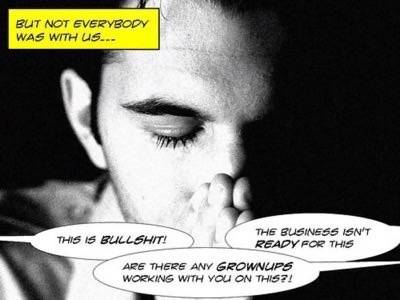Most enterprise software sucks. That is my considered opinion from 30 years in the software biz. Words that come to mind are: bloated, inflexible and user hostile. The good news is that it is getting better, a lot better. The driver for change is what I call the consumerization of enterprise software. These new software champions typically have some if not all of these 8 main attributes:

- Monthly Subscription fees, not upfront perpetual license fees. This means the vendor has to be good to keep earning the $$$. The vendor also gets a predictable revenue line, so they can invest in R&D with confidence.
- Adoption by users, not forced by corporate policies. Users “vote with their mouse”, so it has to be good to get traction and bloat gets quickly punished.
- Usable without a manual within 30 minutes, still valuable for a sophisticated power use 2 years later. That is the mark of greatness. It is a real art. The great ones make it look simple – it is not simple!
- Hosted SaaS, so that vendors can invest R&D in new features and not in the intricacies of different platforms forced on them by an internal IT department.
- Enabling secure, fine-grained communication across the firewall. This is the big issue for enterprises. Not many vendors do this right yet. Today we see too much binary “you are either inside or outside”. The winners will enable security in a much more fine-grained way.
- Loosely coupled, not attempting lock-in, enticing but not forcing use of related modules/products. This is a real biggie. Bringing any new system into a company involves a horrendous amount of co-ordination and interfacing. The one’s that say “you can have just this little bit and it takes in data this way and spits out data this way” will win.
- Freemium model, so some early experimentation can be done free of cost. This also reduces the vendor’s sales cost, so they can invest more in R&D and/or lower the price enough to drive adoption.
- Fun, relaxed, not taking itself too seriously. Taking off the suit helps adoption.
Image via cambodia4kidsorg, from a slideshow from revells (featured at the bottom of this post)

Whereas in the consumer world we wrestle with business models around advertising, in the enterprise the model is real simple – subscription fees. Often these are replacing massive old legacy systems. The subscription fee can be less than the annual maintenance fees of the legacy system, so its a “no-brainer” corporate decision to allow it.
The vendors who really get it, who are driving this include WordPress, Google and 37 Signals. The losers in this game will be Oracle, SAP and lots of other traditional enterprise software vendors. The incumbents understand the problem and have plenty of smart developers and they have the capital to buy any of the start-ups. But they face the classic “innovator’s dilemma”. Any serious move in this direction will hurt their current cash cow, validate the start-ups and alienate their allies in the internal IT departments.
Image via revells

New tech markets go through fairly well-defined but overlapping phases:
- The talking phase. This is when the money to be made is in seminars, workshops, conferences and consulting.
- The experimentation phase. This is when lots of inexpensive or even free experiments are done. Nobody makes any money, but lots of people learn a lot.
- The pioneer phase. This is when a few companies, led by visionary IT or business people, adopt the new technology in a serious way and have a big impact on their bottom line. They usually want to be quiet about this, protecting their intellectual edge as long as possible.
- The breakout phase. This is when word leaks out, the winning vendors raise more money or get bought and it starts to look obvious.
- The “tornado” (hat tip to Crossing the Chasm). This is when new vendors do their IPO and legacy vendors who have the head buried deepest in the sand suffer the worst that creative destruction can dish out.
My assessment is that we are currently somewhere between 2 and 3.
This is a great time to be in this market.
Ed: I found this great presentation on enterprise 2.0, called Sowing the seeds of enterprise2.0 in a global organization. Hat tip Beth Kanter for the link.










